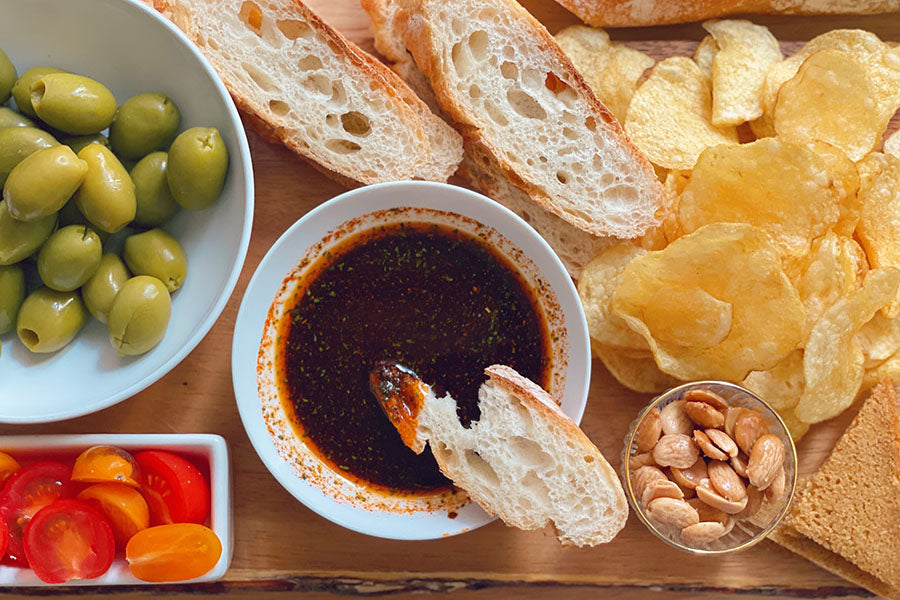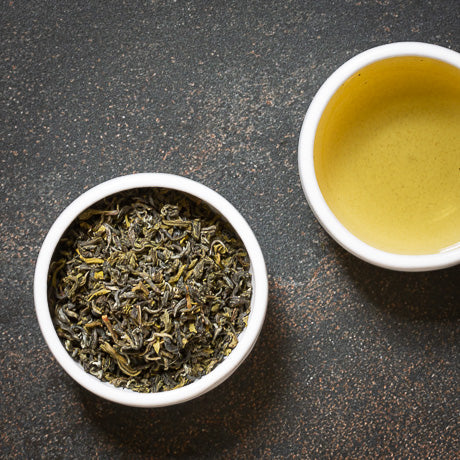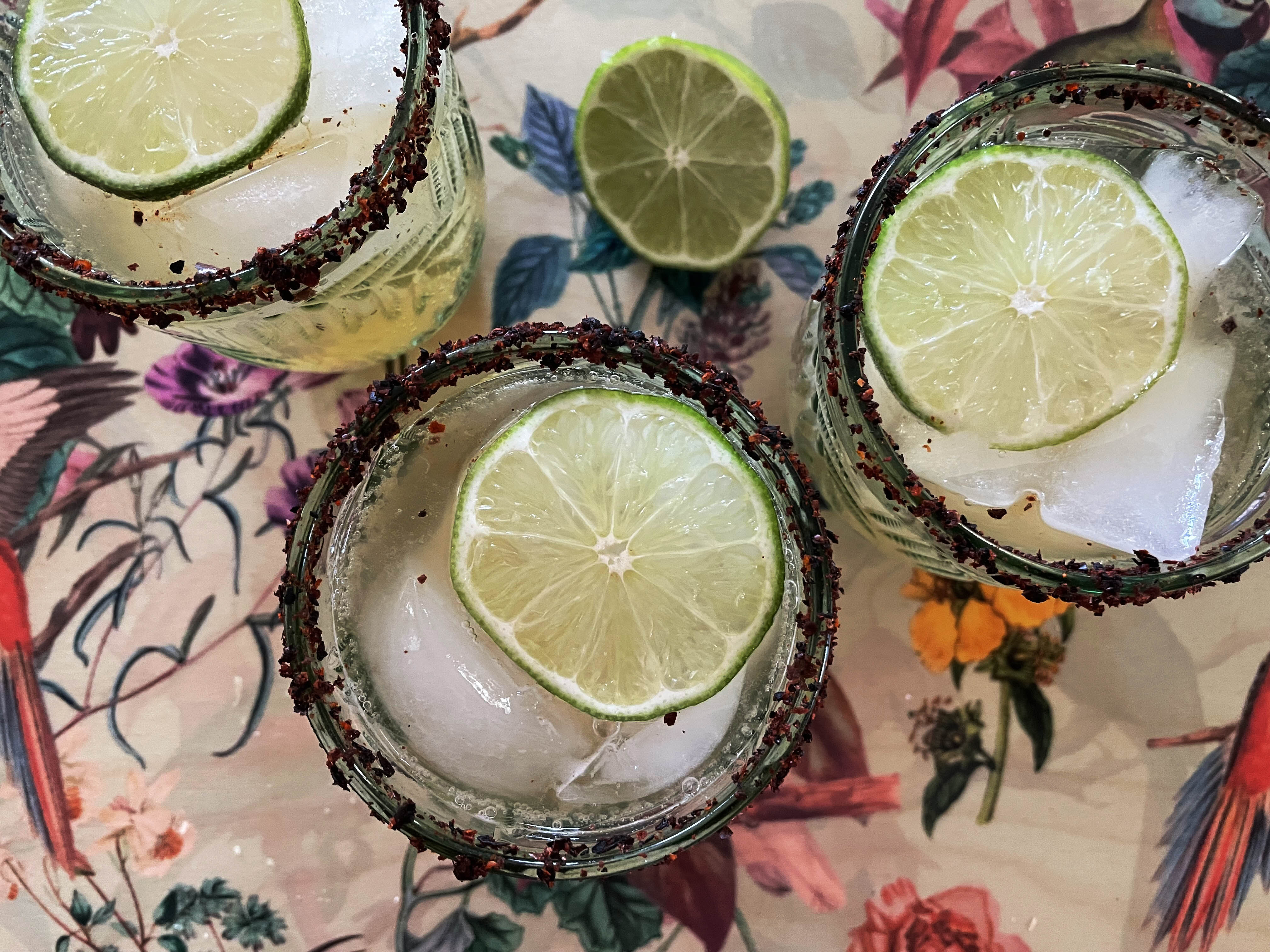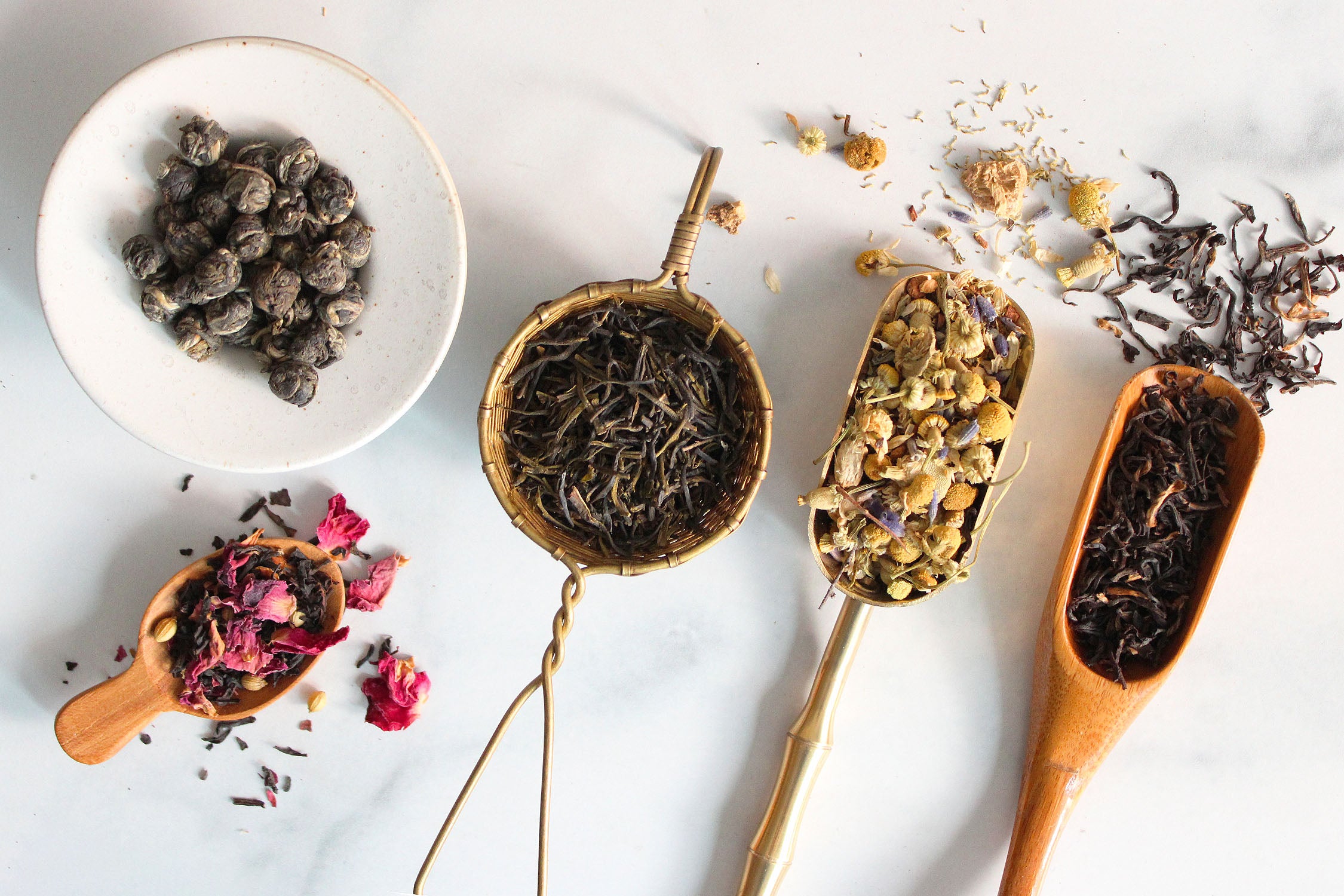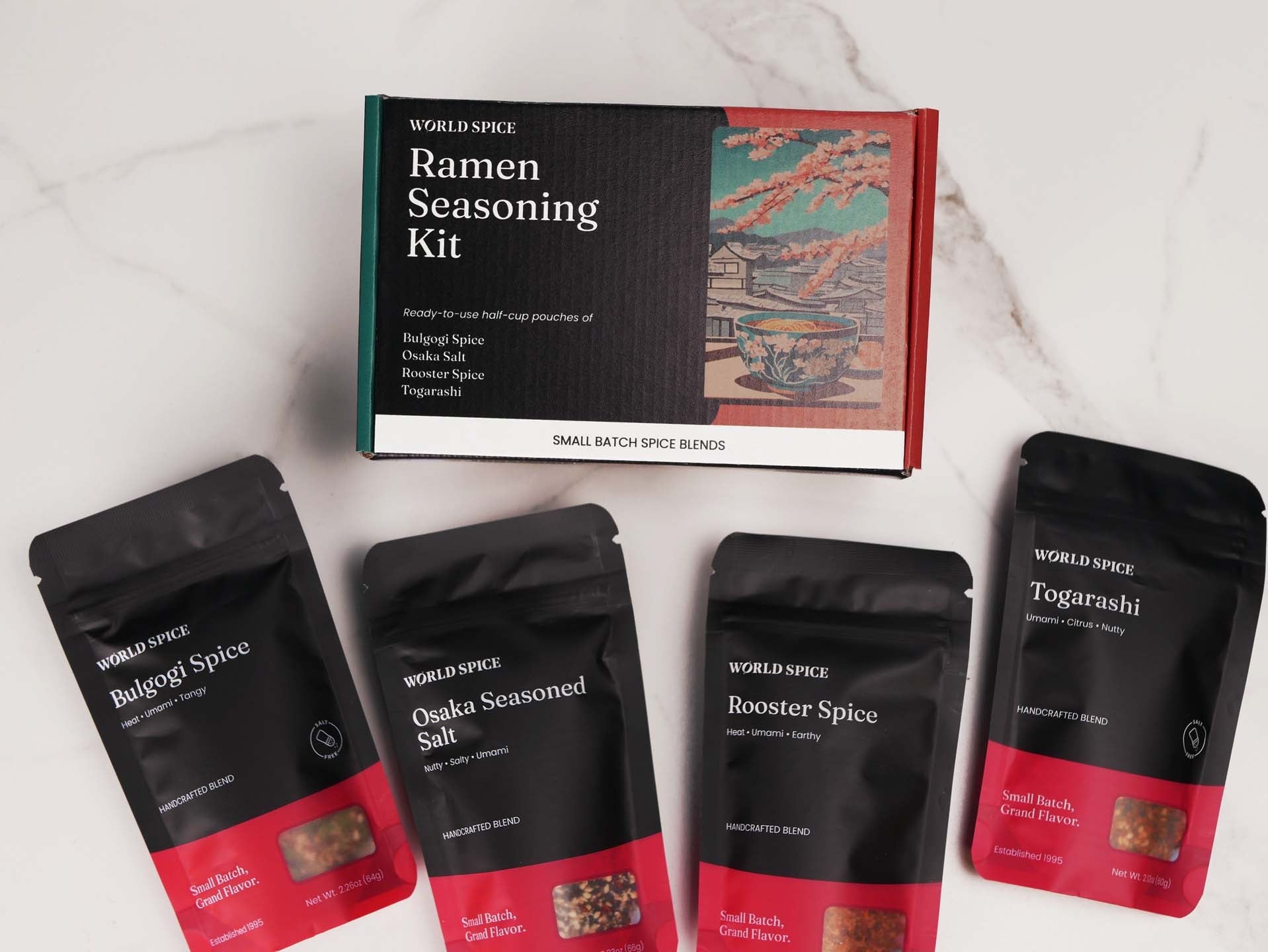Spice 101
Pumpkin Pie Spice
History Pumpkin pie spice is a blend of warm, aromatic spices that were originally brought to Europe from Asia during the spice trade, starting as early as the Middle Ages. In colonial America, these spices became essential in cooking and baking, especially during the autumn and winter months when their warming qualities were most appreciated. Early settlers adopted pumpkin as a staple food because it was easy to grow and store, leading to the creation of spiced pumpkin dishes, which began appearing in cookbooks in the 17th and 18th centuries. However, the idea of "pumpkin pie spice" as a pre-mixed blend didn’t emerge until the 20th century. Summary Our pumpkin pie spice is anything but basic—made of historically rare spices sourced from the renowned Spice Islands and beyond. Indonesian cinnamon lays the foundation with sweet, complex notes and a hint of citrus, while Vietnamese cinnamon adds bold intensity. Nutmeg offers earthy depth, balanced by the zesty bite of ginger. Jamaican allspice brings aromatic warmth, and mace adds a lighter, peppery sweetness. Orange peel’s citrusy zest balances the warmth, while cloves enhance the profile with a sweet-spicy flavor. A touch of Indian cayenne provides a subtle kick, adding a lingering warmth that makes our blend distinctive. Ingredients Indonesian Cinnamon, Vietnamese Cinnamon, Nutmeg, Ginger Powder, Jamaican Allspice, Mace, Orange Peel, Cloves, Indian Cayenne. Why We Love It We love our pumpkin pie spice because it captures the essence of fall. The blend’s versatility is a big part of its charm—it's not just for pumpkin pie anymore. A dash of this spice instantly adds warmth and depth to any dish, making it a kitchen staple during the cooler months. We especially love it in coffee and overnight oats! The More You Know Did you know that the first recorded recipe for pumpkin pie dates back to the 17th century? It was more of a pumpkin-filled custard than the spiced pie we enjoy today, but the love for pumpkin-flavored treats has clearly stood the test of time!
Learn moreEarl Grey
History Earl Grey tea is one of the most iconic teas in the world, with a history as rich as its flavor. Named after Charles Grey, the 2nd Earl Grey and British Prime Minister in the 1830s, this tea has become synonymous with refinement and elegance. The tea was reportedly created as a gift to the Earl after he successfully mediated a trade dispute in China. The blend's distinctive flavor comes from the addition of bergamot oil, a fragrant citrus fruit that grows primarily in Italy. Over the centuries, Earl Grey has maintained its status as a staple in both British and international tea culture. Summary Earl Grey is a black tea blend infused with the essence of bergamot, a citrus fruit that lends the tea its signature floral and slightly tangy notes. It's a versatile tea that can be enjoyed hot or iced, with or without milk, and sweetened or unsweetened. Equally at home as part of a traditional afternoon tea or on the go in a travel mug, Earl Grey is both comforting and sophisticated. Why We Love It We love Earl Grey tea for its unique flavor profile, which balances the robust richness of black tea with the bright, citrusy notes of bergamot. This blend is a great way to start the day, providing a gentle caffeine boost with a refreshing twist. Earl Grey is also a favorite in our kitchens, where we use it to add a distinctive flavor to baked goods, sauces, and cocktails. The More You Know For a twist on the classic Earl Grey, try adding a pinch of lavender to your brew. Lavender Earl Grey, sometimes called "Lavender Grey," combines the citrusy brightness of bergamot with the soothing, floral notes of lavender. The addition of lavender not only enhances the aroma but also adds a layer of complexity to the flavor, creating a more calming and aromatic tea experience.
Learn moreChorizo Bomb
Chorizo Bomb is a smoky, spicy, powerhouse featuring a lineup of some of our best chiles. History Chorizo is a beloved sausage with rich culinary traditions in the Iberian Peninsula, equally loved by Spain and Portugal, who then influenced the development of similar dishes in Mexico and South America. All of these have their own distinct flavors and preparation methods that can even vary from family to family. Spanish chorizo is known for its deep, smoky flavor, achieved through curing and smoking, often featuring sweet smoked paprika and garlic. It's commonly enjoyed sliced and served as part of tapas or added to stews and soups. Portuguese chorizo, called chouriço, is made with a coarser grind of pork and often includes wine alongside the paprika and garlic. It is eaten as a staple food, often grilled and paired with cheese and crusty breads. In contrast, Mexican chorizo is typically uncured and sold raw. It has a brighter, tangier kick and lots of heat and smoke from chile peppers like chipotle and pasilla oaxaca. It's usually crumbled and cooked and used for breakfast tacos, empanada fillings or served with refried beans. Summary Our Chorizo Bomb draws inspiration from all three culinary traditions. The flavor is smoky and spicy, with a rich meatiness that comes from savory herbs and chiles. This blend is salt-free, making it a great option for those looking to reduce their sodium intake without sacrificing flavor. Ingredients Chipotle Flake, Cumin, Chopped Garlic, Smoked Sweet Paprika, Urfa Biber, Guajillo Flake, Pasilla Oaxaca, Hungarian Paprika, Thyme, Marjoram, Mexican Oregano, Turkish Oregano. Why We Love It Chorizo Bomb really is a flavor explosion. Its spicy, smoky, and savory profile makes it a go-to in our kitchens all year round. From autumn squash and sweet potatoes, to hearty winter stews, to spring dips, and summer grilling this blend shines anywhere you crave a smoky, spicy, chile pepper bite. Although these spices are traditionally used to flavor meat, our Chorizo Bomb is completely vegan and delicious in veggie and plant-based dishes. The More You Know The process of making Urfa Biber involves curing the chiles in the sun, which allows them to develop a deep, raisin-like sweetness that complements their natural heat. This method, along with the smoking of Pasilla Oaxaca chiles, contributes to the distinctive flavor profile of Chorizo Bomb, making it a unique blend that offers more than just spiciness—it offers a story with each bite.
Learn moreMoroccan Mint
History This traditional tea traces its roots back to the mid-19th century when tea was first introduced to Morocco through trade with the British. Over time, Moroccans adapted the beverage to their tastes, infusing it with fresh mint leaves and a generous amount of sugar. The ritual of preparing and serving Moroccan mint tea has since become an essential part of Moroccan social life, symbolizing warmth, friendship, and generosity. Summary Moroccan Mint is a refreshing, aromatic blend of Chinese gunpowder green tea and the sweet, cooling essence of fresh mint leaves. The tea is typically brewed in a special teapot called a "berrad" and served in small, ornate glasses. The preparation of Moroccan mint tea is an art in itself, often performed with a theatrical flourish as the tea is poured from a height to create a light froth. Why We Love It Invigorating mint and slightly astringent green tea combine to create a refreshing drink that’s perfect for any time of day. It can be enjoyed hot to warm you up on a chilly evening or served iced for a cooling summer refreshment. Beyond its taste, Moroccan Mint embodies a spirit of hospitality and connection, making it a wonderful way to bring friends and family together. Recipes Iced Moroccan Mint TeaMoroccan Watermelon Cooler The More You Know Traditionally, the head of the household or a guest of honor prepares the tea, carefully measuring the tea leaves, sugar, and mint. The tea is typically served three times, with each glass having a slightly different flavor profile. According to a popular Moroccan proverb, “The first glass is as gentle as life, the second as strong as love, the third as bitter as death.”
Learn moreRose Harissa
History Harissa, a spicy condiment originating from North Africa, particularly Tunisia, boasts a rich history steeped in culinary tradition. Originally crafted from hot chili peppers, garlic, and a blend of spices such as coriander, cumin, and caraway, harissa served as a versatile staple in Maghreb (the region of north Africa lying west of Egypt) cuisine. Its fiery flavor profile and robust aroma quickly spread across the Mediterranean and Middle Eastern regions, where it became integral to various dishes, from couscous to grilled meats. Yotam Ottolenghi, a prominent figure in modern Mediterranean cuisine, played a pivotal role in popularizing rose harissa through his innovative recipes and culinary influence. Ottolenghi's use of rose harissa showcased its ability to impart a unique floral complexity to dishes, capturing the attention of chefs and home cooks alike. His creative approach and widespread acclaim helped introduce rose harissa to a global audience. Summary Rose harissa incorporates the traditional spicy base of harissa with the delicate fragrance of roses. This infusion introduces subtle tartness and floral complexity, distinguishing it as a cherished ingredient in contemporary Mediterranean and Middle Eastern cuisines. Ingredients Guajillo Flake, Roses, Caraway, European Coriander, Smoked Sweet Paprika, Garlic, Hungarian Paprika, Chile Pepper, Cumin Seed, Kosher Salt, Citric Acid, Indonesian Cinnamon Why We Love It Rose harissa enriches dishes with depth and sophistication. The addition of roses enhances the aroma and balances the traditional spiciness of harissa with gentle sweetness and tanginess. Its versatility makes it ideal for marinades, dips, dressings, and as a flavor enhancer in soups and stews. The More You Know In contrast to traditional harissa, known for its intense heat, rose harissa offers a more nuanced flavor experience. While retaining the spicy base, rose harissa introduces floral notes and a touch of acidity. This makes it appealing to those seeking a complex flavor profile that includes floral and citrus elements.
Learn moreMatcha
History The ubiquitous matcha we know today has an ancient history with deep cultural significance. The practice of crushing tea into powder comes to us from the Tang Dynasty in China during the 7th - 10th centuries during which time tea harvests were steamed and formed into bricks to make them easier to transport. To brew the tea, a small portion was broken off and pulverized, then steeped in hot water. Several centuries later, a Japanese Buddhist monk named Myoan Eisai traveled to China and experienced the benefits this tea had on his meditation practice. When he returned to Japan he brought seeds with him from the tea plants that had grown this tea, as well as the knowledge and practice of how to create the ancestor beverage to our modern matcha. Through its association with Zen Buddhism, the brewing of matcha became an intricate ceremony in Japan, symbolizing beauty within an imperfect world. Matcha became an important part of Zen Buddhist philosophy, as well as Samurai culture and, later, a status symbol of the elite. Matcha powder as we know it today has been available and widely used in China and Japan for hundreds of years, and made its way into the global market only very recently. With globalized trade and a new popular focus on health and health foods, the sale and availability of matcha has exploded over the last ten years. With a slew of researched health benefits and designation as a “superfood” matcha’s popularity is still on the rise. You can find matcha and matcha flavored items in the US in coffee shops, grocery stores, tea houses, even gas stations and bodegas. Summary Matcha is made from shade-grown tea plants, known as tencha, utilizing the youngest leaves and buds at the ends of the branches. Shade-grown tea has more chlorophyll, which is one of the reasons for matcha’s brilliant green color. The leaves are carefully harvested, steamed to halt oxidation, then deveined by hand, dried, and ground into a fine powder. This is one of the most labor intensive teas to manufacture and has a highly selective grading process to further define the quality of every batch of tea that is made. Within the broader category of matcha tea there are three distinct grades: Ceremonial - Ceremonial matcha is made from the very first spring harvest of new leaves on the tea plant (called the "first flush") and is intended strictly for drinking as a pure tea without sweeteners or added ingredients. The mild, delicate, and complex flavor would be lost in a latte or blended beverage, likewise in desserts or baked goods. As the name implies, ceremonial matcha is created to be used in tea ceremony and is regarded as an elevated, precious beverage. Daily/Premium - Premium matcha is one step below ceremonial grade and is made from the second harvest or "second flush" of leaves on the tea plant. It has a taste very similar to ceremonial grade, but with a slightly more robust flavor. This grade of matcha is used for drinks such as traditional matcha, along with lattes, frappes, and smoothies, and is also used in cooking. This is the most versatile of the matcha grades. Culinary - Culinary matcha is made from the second and third flushes of the tea leaves and has a strong, bold flavor with more bitterness and a coarser powder. Culinary matcha is intended mainly for the purposes of cooking and baking. The matcha we offer is an organic premium grade matcha from the Yabukita cultivar, shade-grown in Uji, Japan, and stone ground in the traditional way. We find that this matcha has a broad range of uses, is affordable, and has an excellent flavor. Why We Love It The bright, grassy flavor and gorgeous color of our matcha is an endless source of inspiration to us. We love it in lattes, ice cream, shortbread cookies, smoothies, and cheesecake. The fine powder blends beautifully into any recipe you might choose, from simple to intricate. The More You Know Matcha is traditionally prepared using a small bowl called a matchawan and a specialized bamboo whisk called a chasen. A small portion of matcha powder is measured into the bowl, then topped with hot water around 145℉ - 165℉ and whisked briskly until the tea powder is fully incorporated and a fine foam is formed on the surface. For a more modern take, some folks use milk frother for similar results. We recommend approximately 1 teaspoon of matcha per 6 - 8 ounces of water.
Learn moreKC Tailgater's BBQ Rub
Iconic BBQ for any occasion History Kansas City, Missouri is synonymous with barbecue. In fact, KC is known as the BBQ capital of the world and is home to both its own barbecue society and the largest BBQ celebration on the globe - The American Royal World Series of Barbecue. Here’s a short version of how it got there: With a thriving rail hub and meatpacking industry, KC in the early 20th century was poised to be the birthplace of a cooking tradition that would become an indelible part of the culture of Kansas City and a hallmark of American BBQ. The man who started it all, colloquially known as the Barbecue King, was Henry Perry, a 15 year veteran Mississippi riverboat cook, who set down roots in KC and started a stand slinging BBQ in an alley in the Garment District. That one tiny business blossomed into the wildly delicious and good-spiritedly competitive KC BBQ culture we know today. Perry’s cooking style is the sturdy foundation that Kansas City BBQ has grown from, and our KC Tailgators BBQ Rub pays homage to those iconic flavors. There are four distinctive styles of American BBQ: Carolina, Texas, Memphis, and Kansas City. So what are the characteristics that set KC BBQ apart? Dry Rub - While some styles use salt and pepper or vinegar on their meats, KC pitmasters use a bold blend of spices in a signature dry rub before cooking. Variety - KC BBQ involves the broadest range of proteins of any American BBQ style. Expect to find pork, beef, chicken, lamb, venison, catfish, sausage, and the list goes on. Wood Smoke - Traditional KC BBQ uses hickory and oak chips for smoking meats. Thick Sauce- KC style BBQ sauces are tomato-based, with molasses and lots of black pepper. Burnt Ends - Crispy, fatty, salty, and to-die-for delicious, burnt ends are the end pieces trimmed off a slab of barbecued brisket and they are a staple in KC BBQ cuisine. Summary Our KC Tailgater’s BBQ Rub was made to complement any protein you could imagine to pair it with. Created in the traditional KC BBQ style of dry rub, it shines when applied before cooking low and slow in a smoker, on the grill, or even in your home oven or stovetop. Because this blend is so versatile, if you’ve only got room for one BBQ rub in your pantry, Tailgater’s is the one to choose. Ingredients A masterful blend of Paprika, Garlic, Brown Sugar, Cumin, Black Pepper, Kosher Salt, European Coriander, Black Pepper, Mustard, Thyme, Sage, Celery Seed, Cloves, and Turkish Oregano. This blend hits on all the flavors your heart longs for in a BBQ rub - sweet heat, savory and sharp notes, and satisfying umami. Why We Love It To put it simply, KC Tailgater’s BBQ Rub makes all our barbecue dreams come true, fulfilling all those quintessential summer scents and flavors. This blend is so easy to use, and delivers such an incredible punch of flavors, it’s as close as you’ll get to foolproof BBQ. The More You Know What’s in a name? Beyond barbecue, Kansas City has many long standing local cultural traditions, one of which is the tailgate party. Before any major sporting event, concert, or other stadium occasion you can find folks showing up bright and early to the parking lot with grills, tents, tables, and a whole lot of food! Tailgating is a social event that brings the community together with good times for all. We chose the name KC Tailgater’s BBQ Rub to invoke that spirit of camaraderie and celebration.
Learn moreMontreal Steak & Chop
Meet Montreal Steak and Chop: a classic North American spice blend with bold flavors and a surprising origin. Ancient History Our story starts several centuries ago in the Ottoman Empire (yes, really). Due to a lack of refrigeration, blends of spices were used to preserve meat. A version of these blends was used to make a dish called basturma, which eventually evolved into a Romanian dish called pastramă. When Romanian Jews came to the New World, they brought along this recipe, which became the deli staple pastrami. Fast forward to Schwartz’s Deli in Montreal where Morris “The Shadow” Sherman decided to use this same smoked meat spice on the steak he made himself for lunch. It smelled so good it became an instant favorite and the rest, as they say, is history. Ingredients Our Montreal Steak and Chop blends Garlic, Onion, Black Pepper, Lemon Peel, Bell Pepper, Kosher Salt, Thyme, Caraway, European Coriander, Dill Seed, and Citric Acid for a mouthful of flavor that’s both balanced and bold. Summary With notes of Eastern European herbs and spices, Montreal Steak and Chop is both bright and earthy. Most often used for steaks, pork chops, and roasts, it is also well-fitted for hearty vegetarian dishes. Why We love It A savory super star! While this blend loves a juicy cut of pork or beef, it is equally at home with dark leafy greens, potatoes, or even baked into the crusts of breads, buns, and bagels. One of our chunkier blends, Montreal Steak and Chop adds not only bold flavor but also a pleasingly toothsome texture to any dish. The More You Know To avoid an acrid and unpleasant dining experience, if using this blend on large cuts of meat, avoid searing over very high heat or add your spice after initial searing. The chunky style of this particular spice can make it easier to burn, and burnt spices are not delicious.
Learn moreJasmine Pearl
Jasmine Pearl tea is your new best friend. 💚🌿 History The use of fresh jasmine flowers to scent green tea is estimated to date back to the South-Song Dynasty in China during the thirteenth century. Although green, black, and white teas are scented with jasmine, green tea remains the most popular. Jasmine Pearl tea was originally reserved as a drink for the Emperor, and is still known in some markets as “Emperor’s Tea” today. Summary Jasmine pearls are hand-rolled from early spring, high elevation tea harvests. These individually made pearls are then dried and scented with fresh night-blooming jasmine blossoms to create a singular flavor that is exquisitely floral, delicate, and sweet. Why We love It This tea is the closest you’ll find to pure joy in beverage form. The floral aroma and sweet grassy flavor are so uplifting and so delightful they can turn around even the glummest of mornings and make a good day even better. The pearls can be brewed in a short, hot infusion, or cold brewed overnight for a light and refreshing iced tea . From our staff herbalist: Combine with roses, chamomile, and a dab of honey to lighten your heart and lift your spirits. Recipes Raspberry Pearl Sherbet and Cava Float Sumac Strawberries with Jasmine Pearl Pound Cake The More You Know Green tea should be steeped for 2 - 5 minutes at around 185°F for optimal flavor Don't have the equipment to measure water temperature? No problem. Just bring your water to a boil, take off the heat, and let it sit uncovered for 8 minutes, then steep your tea. This tea can (and should!) be re-steeped up to four times for an evolving taste experience Because the tea pearls are made of whole, rolled leaves you can leave them loose in your cup to watch the magic as they unfurl Easily steep your pearls with this travel tea infuser.
Learn more










